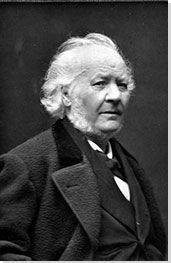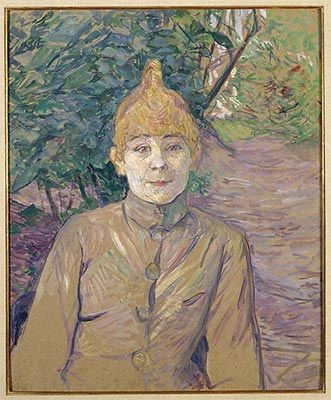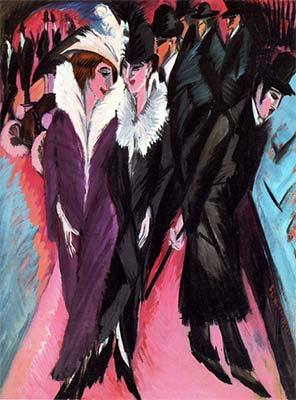Summary of Honoré Daumier
The witty caricatures of Honoré Daumier made him one of the most widely recognized social and political commentators of his day and even landed him in jail for insulting the reigning monarch. Daumier's caricatures stand out as his most successful works, yet he remains unrecognized for the impressive diversity of his art as he produced not only the lithographs for which he is famous but also drawings, oil and watercolor paintings, and sculpture. Daumier pioneered a style of Realism that focused on people of all echelons of society and spared few, with the exception of the working class and the poor, from his sharp wit and scrutinizing eye. He lived in Paris during a period of political and social unrest, which included two revolutions as well as frequent regime changes, a war, and a siege. Many of his works confronted the complex social, political, and economic consequences of the turmoil. Perhaps his greatest contribution to modern art was his ability to capture even the simplest moments in life and infuse them with emotion.
Accomplishments
- Daumier's painting style echoes that of Francisco Goya, Eugène Delacroix, and Théodore Géricault with its loose, expressive brushwork. Eschewing the controlled and polished surfaces of Neoclassical painting, he and other Romantic artists imbued their work with emotion - in many cases, high drama. Unlike most Romantic painters, however, his work is devoid of sentimentality but neither did he convey the kind of emotional distance of Realists like Courbet. Thus, recent day critics and art historians tend to regard his painting style as a sort of precursor to Expressionism.
- While Daumier produced hundreds of small sculptures in unbaked clay, often painting them with oil pigments, very few reached what might be regarded as a finished state. Those works that were cast in plaster, typically with the help of more experienced sculptor friends (even after his death), have been far easier to preserve and provide insight into his sculptural process.
- For an artist so revered and influential, Daumier's life was characterized by struggle - with his increasing blindness, illness, and poverty. He received a small pension from the government starting in 1877 so he was able to survive. Thanks to the intervention of and patronage of another esteemed friend, Victor Hugo, an exhibition of Daumier's work was held at the Galerie Durand-Ruel and he received proceeds from the sales.
Important Art by Honoré Daumier
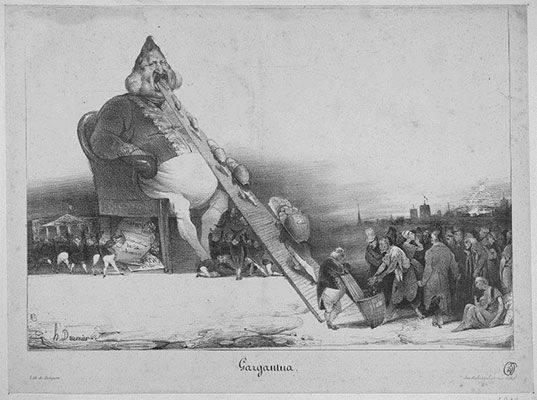
Gargantua
In this controversial lithograph, which was to be published in Charles Philipon's newspaper La Caricature on December 16, 1831, Daumier depicted the corpulent monarch Louis-Philippe seated on a throne, gobbling bags of coins being hauled up a ramp by tiny laborers, the coins having been wrung from the poor of France by his ministers. On the lower right, a crowd of his poverty-stricken subjects stand waiting miserably to turn over what little money they have. Milling around the throne are Louis-Philippe's favorites, also extravagantly fat; they are collecting commissions, decorations, and so forth that are the result of the compulsory offerings of the poor.
The title, Gargantua, explains Brandeis University, "was actually referring to the incredible amounts of money the French government spent on itself. Louis-Philippe allowed himself a 'salary' of more than 18 million francs, which was 37 times more than Napoleon Bonaparte or almost 150 times the amount the American President received." Further, that outrageous salary was paid him on top of the regular income he was given to maintain the castles he owned. All the while, the majority of the population was living in dire poverty.
While the scathing image was meant to run in the December 16, 1831 publication of La Caricature, the police along with government's censor halted the printing. An article appeared instead, criticizing the Court's decision to censor the cartoon. The publisher and artist were both tried in Court in February 1832; each man fined 500 francs plus legal fees and pleaded guilty. All three were sentenced to six months in Sainte-Pélagie prison. Shortly afterwards, La Caricature newspaper ceased to exist but Maison Aubert began publishing the equally controversial satirical newspaper, Le Charivari.
Lithograph - Brandeis Institutional Repository, Brandeis University
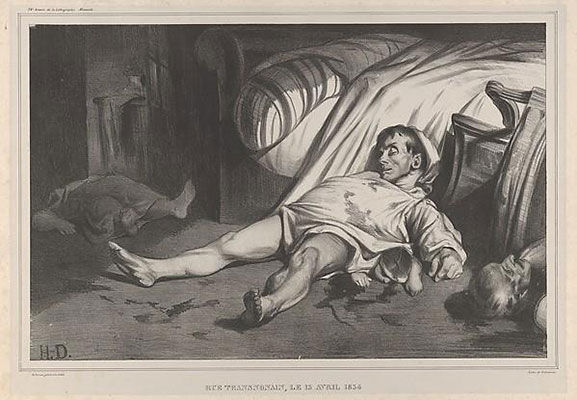
Rue Transnonain 15 April 1834
In order to help pay his censorship fines, Philipon established L'Association mensuelle lithographie (Monthly Lithography Association), a kind of monthly print club. Subscribers to the club were entitled to a large lithographic print each month. A total of 24 prints were produced for the club, five of which were created by Daumier. This work was the last print from the series.
This deeply disturbing image was made to commemorate the murder by the National Guard of innocent civilians during widespread unrest in Paris during the month of April 1834. The strife had come after the French army repressed a revolt staged by silk workers in Lyon in the South of France. According to accounts of the tragedy, gunshots had rung out from an upper floor window at 12 rue Transnonain and French troops responded by storming the building, opening fire, and wounding and killing residents of the working class abode.
Daumier's mastery of lithography provides this work with its gut-wrenching impact. The raking light - so often emblematic of his cynicism, of satire - now represents a kind of unflinching and courageous honesty as the government is exposed for its murderous tyranny. Whereas typically the artist relies on exaggeration, for instance, distorting physical characteristics of a human subject to expose an underlying character trait or even flaw, here no exaggeration is needed. In fact, if anything, understatement is at play: a bloody scene depicted in stark black and white is perhaps less openly gruesome. However, this image of the haunting aftermath is made more disturbing by the elimination of color and of any extraneous details. What you see is the ghastly result of indiscriminate violence.
The print was released six months after the event and was accompanied by a commentary written by Philipon: "This lithograph is horrible to behold, as horrible as the dreadful event it recounts. It shows a murdered old man, a dead woman, the corpse of a terribly wounded man lying upon the body of a poor little baby whose head is split open. It is not a satire, it is a bloody page in the history of our modern era, a page sketched by a powerful hand and inspired by a lofty imagination..." Police discovered this print displayed in the window at Galerie Vero-Dodat, a covered arcade in the center of Paris. Subsequently, officials from the government confiscated the lithographic stone and tracked down and destroyed impressions of Rue Transnonain. A year later, Louis-Philippe's censor made political caricatures illegal.
Lithograph - The Metropolitan Museum of Art, New York City
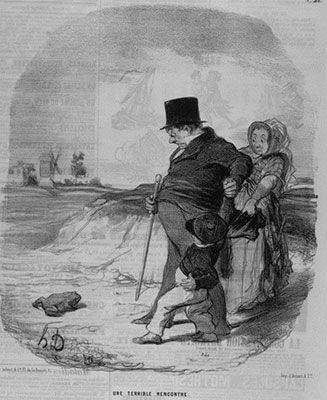
Une Rencontre Terrible (A Terrible Meeting)
When he began creating lithographs for Philipon's Le Charivari, Daumier turned his cynical gaze toward the Parisian bourgeoisie. Here, a well-dressed bourgeois family is on an outing in nature - the trio quite out of their element in the mud of the open countryside. Surprised by the large frog in their path, these city dwellers in their finery recoil. The father, whose rotund physique echoes that of the frog, shields the body of his wife from the creature while the young son, a miniature version of the overfed patriarch, throws up one hand in alarm.
As Guardian art critic, Laura Cumming, points out: "Nobody can take you into the heart of Paris as Daumier does..." - or the hearts of Parisians. "What is extraordinary, however," she points out, "is that tough these Parisians may be directly observed they are not directly drawn from life. They have been passed through Daumier's sympathetic imagination and become in some sense monuments themselves." Indeed, the artist did develop some archetypal figures that appear and reappear in his cartoons, caricatures of real people with certain traits exaggerated for symbolic impact. That is certainly the case in this image, where the pear-shaped bodies of these affluent males are seen repeatedly in representations of the excess of capitalism, a system within which Daumier struggled for survival his entire career.
Lithograph - The National Gallery of Art, Washington DC
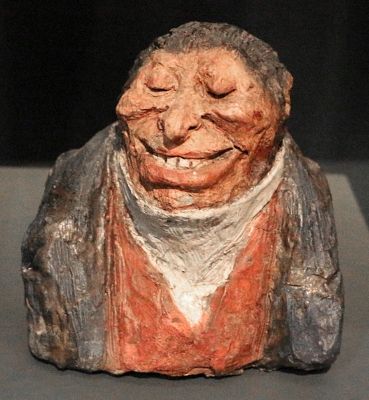
The Celebrities of the Juste Milieu
Daumier's most consistent employer and patron for decades of his artistic career was Charles Philipon. Along with his brother-in-law, Gabriel Aubert, Philipon established La Maison Aubert, which was a publishing house that specialized in political and social commentary. The company's satirical journals, Le Charivari and La Caricature, frequently published Daumier's often controversial lithographs. In 1832, Philipon commissioned the artist to produce a series of caricature busts. Of the original 40, 36 remain and are part of the Musée d'Orsay's permanent collection, although they were initially kept in the workshop of La Maison Aubert.
In designing the sculptures, Daumier relied on lithographs he had produced of the figures in this so-called "gallery" of The Celebrities of the Juste Milieu, although the sculptures are often discussed as maquettes (models) for their lithographic counterparts of the same people. The "celebrities" were politicians and other people involved with the July Monarchy (1830-48), the constitutional monarchy under Louis-Philippe.
The sculptures, made of unbaked clay painted with oil pigment, echo the ruthless realism that lay beneath the artist's caricatures. Modeled rapidly and somewhat inexpertly as Daumier was never formally trained as a sculptor, the sculpted busts, which were never fired but rather roughly painted, function as, in some ways even more unforgiving, exaggerated likenesses of their subjects. The artist spared no feelings, including those of his patron Philipon, and the caricature busts are, as the New York Times observed, "marvelously expressive...dazzlingly evocative works of portraiture."
Very little is known concerning Daumier's training as a sculptor. Some known sculptors and also his friends such as Antoine-Augustin Préault (in the early years) and later Jean-Jacques Feuchère and Victor Geoffroy-Dechaume are thought to have shared with him their own expertise. The latter cast some of Daumier's models in plaster and is known to have stored some of the models in his own studio. The unfinished quality of his sculptures, regardless of medium, suggest to scholars that Daumier had virtually no formal training and the most constructive and consistent that he likely received was early on from Lenoir.
Oil painted unbaked clay - Musée d'Orsay, Paris
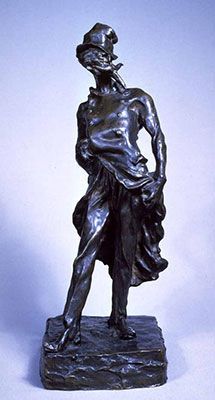
Ratapoil
This character, whom Daumier illustrated in a series of nearly 30 lithographs that were published in the journal Le Charivari between 1850 and 1851, depicts a specific type of person on the political stage of the day. Ratapoil represents, says the Musee d'Orsay, "the shady agent, the indefatigable representative of Napoleonic propaganda." Daumier, a devoted Republican, was attacking the pro-Bonapartist propaganda disseminated by agents working in the service of Louis-Napoleon Bonaparte, of whom this figure, Ratapoil, is a fictive type. Bonaparte, who had been elected to a four-year term of leadership in 1848, was pressing for further control in the way of an imperial restoration. The word Ratapoil translates as "skinned rat." Yet, officially - as presented by a dictionary of the 19th century (Grand Dictionnaire Universel du XIXe siècle) - Ratapoil, the nickname, referred to "a supporter of militarism, and particularly of Napoleonic militarism."
The sculpture was produced sometime in 1851 - most likely in March of that year. Like his two-dimensional caricatures, this figure is exaggerated in some ways. Ratapoil seems both fragile and powerful at the same time. He is at once crumpled, scowling, and boastful. The frenetic lines of the sculpture create intense movement as though this disreputable, shifty character cannot be pinned down. The whiskers on his "fiendish face" would have been instantly recognizable by a contemporary viewer as features of a supporter of the Empire.
"Daumier's sculpture," suggests the artist's biographer Suzanne Glover Lindsay, "distills some essences of his art... One essence is its subject matter. His sculpture utilizes...the human figure to focus on the primary subject of his work, the human condition." By exaggerating features of his subject to caricatural extremes, argues Glover Lindsay, the artist harnessed the "rich expressive power of the human form."
His ingenious capacity for juxtaposing awkward masses in his works - like the weightiness and the scarcity that contrast with one another so starkly with Ratapoil - suggests that Daumier was fully aware of the symbolic power of this visual balancing act. "His modeled forms in relief and in three dimensions," writes Glover Lindsay, "suggest mood or character through their interaction with gravity: disheartened humans struggle for progress on a difficult road; lumpy, static portrait busts suggest obstructive mental inertia."
Patinated bronze - Musée d'Orsay, Paris
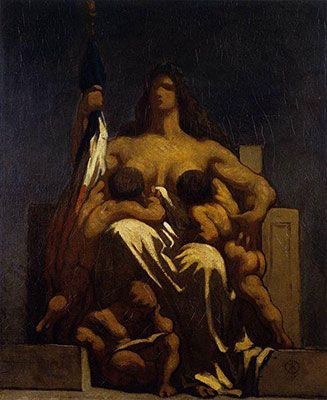
The Republic
When the new French Republic was declared on February 24, 1848 following a long period of upheaval and a bloody Revolution, the new political order demanded its own official imagery. Therefore, a competition to design "the face of the Republic" was launched. Participants in the contest were required to enter sketches for finished paintings; the entries would be exhibited for a few days in early April at the prestigious École des Beaux-Arts. A surprising 700 different artists entered sketches in the competition, including Jean-Léon Gérôme and Jean-Hippolyte Flandrin as well as the less inexperienced oil painter: Daumier. At the time, he had barely made a name for himself as one of Le Charivari's caricaturists. However, his sketch earned him notice, although not all of it was positive. According to the Musée d'Orsay, one critic referred to Daumier's monumental République as a "big woman dotted with children" and it was compared to a work titled Charity (pre-1530) by Italian painter, Andrea Del Sarto, which was in the collection of the Louvre.
Others appreciated this strong, powerful, and seemingly wise mother figure. She holds the French tricolor, the flag of the Republic, and wears on her head the Phrygian bonnet, a symbol of the Revolution of 1789 and of freedom in general. She is both nourishing and teaching her children - the latter evidenced by the toddler in the front reading the book. She was the picture of a "fertile, serene and glorious" future for the nascent French Republic.
Daumier placed 11th in the competition, which was remarkable considering that he was both an unknown quantity and a mostly self-taught artist. As he did not win, the work remained in the color sketch (oil paint) stage. His preference for using dramatic contrasts between dark and light is apparent here as is the strong modeling of figures and objects, particularly of the surprising musculature of the mother and her small children. As with so many of his two-dimensional works, the forms in this work have a distinct sculptural feel about them. The sketch seems more like a preparatory work for a sculpture than for a painting.
Oil on canvas - Musée d'Orsay, Paris
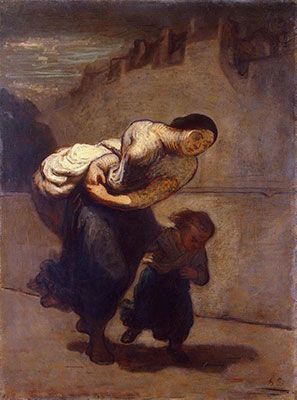
The Burden (The Laundress)
For Daumier, creating three-dimensional versions of figures he intended to paint was an important preparatory exercise, one that he seemed to have often relied upon throughout his career. This painting is no exception: a 14"-tall figurine marks the artist's thought process as he considered how to most successfully describe this archetypal figure in two dimensions, which he did repeatedly.
This laundress or washerwoman symbolizes the poor, overburdened working woman and she is accompanied by the child she struggles to support. Bent under the weight of the heavy bag of laundry she is hauling and against the strong wind opposing her progress, the woman's face reflects determination rather than despair. Empty-handed but equally somewhat thwarted, the child echoes its mother's determination. Of course, the burden of the laundry and the strength of the wind are symbolic of the "greater forces" against which this woman and her child are fighting: poverty, a corrupt government, civic strife, and cyclical revolutions.
There is something almost eerie about the scene as Daumier, a master of extreme, contrasting dark and light, of drama, sets this duo down in an otherwise deserted, shadowy street. From the left, strong light illuminates the woman and her burden; it is a light of noble intentions, of humble valor. The shadow she casts envelops her child, whose future has yet to be decided. Indeed, Daumier was fully aware of the formidable odds against which working women were constantly battling. At the time, in France, women were being forced into the workplace with no allowances made for the children for whom they were responsible. As an earnest Republican, the artist was making a strong political statement, advocating for the rights of working women and their children.
Also largely untaught as a painter, the influence of lithography is apparent in Daumier's painting. He uses the brush somewhat like the crayon of lithography. Sweeping, curving lines define the volumes of the woman's body. Heavy outlining further isolates the two figures in the dreary and ominous cityscape. The earthy subdued palette dominates the picture aside from his use of brighter colors where the heroic body of the laundress is illuminated.
Oil on canvas - Hermitage Museum
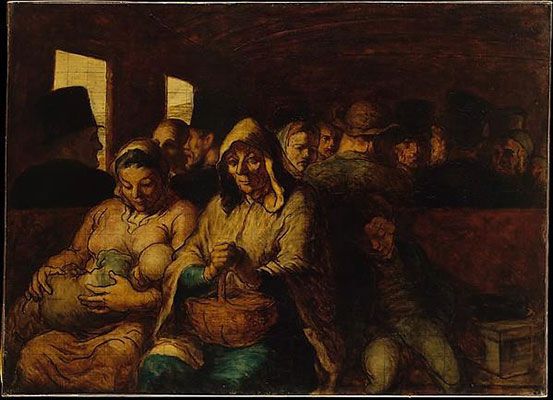
The Third Class Carriage
One recurrent theme of Daumier's commentary was the impact of industrialization and urbanization on the working class people of Paris. Here, in The Third Class Carriage, he turns his attention to new forms of public transport - trains and omnibuses. His interest is not in the vehicles themselves but in the way in which, among other things, social hierarchy is reinforced even within such modern and allegedly democratic conveyances.
The figures who occupy the wooden bench in the painting's foreground are the lower classes who are separated from the more affluent passengers behind them. The feeling of compression that prevails in the background is dispelled by the spaciousness surrounding the figures nearest the picture plane. In contrast to the irritable expressions of the wealthier passengers in the background, the nursing mother, the grandmother, and the sleeping child - all bathed in a warm, golden light - seem quite serene. Characteristic of his sketchy style of painting, resembling the exuberance of line in his lithographs, the figures in the foreground are voluminous, almost sculptural in their solidity. Scholars have connected this monumental quality of Daumier's subjects to his lifelong appreciation of Peter-Paul Rubens and Jean-Honoré Fragonard, and the subject matter to his friend, Millet.
A series of lithographs that had appeared in Le Charivari from 1843 to 1858 called Les Chemins de Fer (The Railroad), had dealt with this subject of public transport. One of the works in particular bore the caption, "Travelers showing less and less appreciation for traveling in third class during the winter period." It appeared in the newspaper on December 25, 1856 and is regarded as the precursor to this painting. Once again, Daumier represents the working class as dignified and their supposed social superiors as literally less substantial, petty, and sniping.
This painting seems to mark the apogee of Daumier's engagement with this theme, although it was not the only painting of its kind. According to the Metropolitan Museum of Art, this picture "relates closely to a watercolor of the same title... from a set of three that includes, The First-Class Carriage and The Second-Class Carriage," all of which are in the collection of the Walters Art Museum in Baltimore. There are several other watercolor paintings and drawings on this theme.
Oil on canvas - The Metropolitan Museum of Art, New York
Biography of Honoré Daumier
Childhood
Although born in the South of France in the port city of Marseille, Honoré-Victorin Daumier spent his life primarily in Paris. His parents, Jean-Baptiste Louis Daumier and Cecile Catherine Philippe relocated their family to Paris in 1814 when young Daumier was only six. Jean-Baptiste, who was a glazier by profession, aspired to be published as a poet and thus was drawn to the French capital where he stood a far greater chance of being recognized for his literary skills.
According to biographies of Daumier, he displayed artistic talent from a very young age, although his father actively discouraged such pursuits, pushing him instead toward more pragmatic vocations. At age 12, out of necessity he began working, first as an errand boy for a law firm and after that as an assistant to a bookseller. By the time he was 14, Daumier's persistence paid off and he was allowed to begin taking informal art lessons with artist and antiquarian, Alexandre Lenoir, who was a friend of his father. He often went out alone to the Louvre to sketch in the sculpture galleries. In 1823, Daumier began studying at the well-known Académie Suisse, a instructor-less art studio run by Charles Suisse, a former model of Jacques-Louis David, that provided artists with low-cost opportunities to draw live models. Other famous students at Suisse's studio were Édouard Manet, Armand Guillaumin, Camille Pissarro, Claude Monet, and Paul Cézanne. At the same time, Daumier was employed with publisher and lithographer Zepherin Belliard, with whom he began learning and experimenting with lithography.
Daumier took to lithography and, having mastered it, began his career producing lithographic plates for music publications as well as creating advertising illustrations. He also took on printmaking for a variety of publishers, although that work was anonymous. During that period, as he was developing his own style, Daumier imitated the style of painter, printmaker, and designer, Nicolas Toussaint Charlet, with whom he shared political sentiments.
Early Period
By the time he was 21, Daumier was creating caricatures using lithography, although still emulating the styles of other artists. After the 1830 Revolution in France, censorship was relaxed and he could begin expressing his political opinions more openly via illustrated pamphlets, which were typically fairly cheap to produce and easy to circulate. He became a contributor in an already well-established tradition of French political discourse: the popular press, including satirical images, critiqued the established order and often paid a high price for doing so during periods of intense censorship.
Two political satirists working in the 1830s were examples for the budding young caricaturist. Hippolyte Bellangé and J.J. Grandville produced dramatic lithographs documenting the rebellion of July 1830, three bloody days of rioting, when Paris rose up against the repressive regime of Charles X. The early years of Daumier's entry into the world of political satirical imagery provided him and other artists with abundant subject matter as the rule of Charles X's predecessor, Louis Philippe I, the so-called "Citizen King," were no less tumultuous before a subsequent revolution erupted in 1848.
During his early twenties, Daumier's friends and also roommates were like-minded bohemian types, including one of his closest associates, sculptor Auguste Préault, who apparently inspired Daumier to utilize sculpture to create his increasingly more brutal and biting political caricatures. He began producing small portrait busts of politicians in clay, basing them on sketches he made while attending parliamentary sessions. He frequently created two-dimensional, lithographic versions of the figurines, all of which were satirical verging on viciously truthful - likenesses that said as much about the interior workings of the subject as his physical appearance, although the latter was consistently strikingly accurate. His caricatures of 1834 collectively formed a controversial series he titled Le Ventre législatif (The Legislative Belly), a kind of cynical group portrait of the members of the National Assembly that was published in the journal, La Caricature, that same year. He followed it shortly after with a sequel far more sinister, Rue Transnonain, which documented the bloody aftermath of a police raid. Daumier had found his media and his artistic voice and it was both graphic and politically powerful.
In 1835, censorship was reinvigorated, La Caricature was silenced, and Daumier then turned his attention to social satire, examining Parisian society of all levels with his characteristic, unflinching sarcasm. From lawyers to the bourgeoisie to pompous artists and unscrupulous landlords, he spared no one. Most frequently, his lithographs were published in the journal, Le Charivari, also owned by Philipon, who had been at the helm of La Caricature. Daumier's work was regarded as the visual counterpart to Balzac's literary excoriations of Parisian society in the day. His artistic contemporaries were Eugène Delacroix, Jean-François Millet, and Charles-François Daubigny, with whom he often met at the Hotel Pimodan, near his home on the Ile Saint-Louis in the Seine River. Daumier had begun living there in 1840 with Marie-Alexandrine Dassy, who was a dressmaker. The couple had a son in 1846 and shortly after the child was born they got married. Two years later the little boy died, although there are no details concerning the circumstances surrounding his death. Indeed, as Daumier's few letters and journals contain little information about his personal life, his biography is quite limited.
By the mid-1830s, Daumier had begun making a name for himself in the genre of political and social caricature. The first two decades of his career were marked by his growing notoriety and the danger he faced as an often outspoken critic of the autocrat du jour and the larger political landscape. Another revolution in 1848 turned the tide for artists, if only briefly. After the monarchy of Louis-Philippe was overthrown, the rules of the artistic establishment were loosened and formerly marginalized artists like Daumier, who were largely self-taught or literally trained on the job, were allowed to enter works for potential selection in the annual Salon. While he refrained from submitting anything to the Salon as he was still new to painting in oil, having taken on self-instruction in that medium, he did enter a competition to produce an allegorical representation of the French Republic. Out of the 20 paintings submitted, Daumier's placed 11th. Encouraged by the jury of the competition, he began to devote himself more seriously to oil painting and subsequently produced a number of paintings with literary and classical themes. His painting was still, however, somewhat clumsy and was therefore largely ignored by critics.
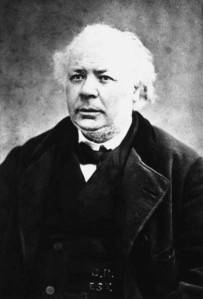
The tides of Daumier's career in some ways turned with the larger political ones. On December 2, 1851, there was a coup d'etat, the parliamentary constitution was abolished, and Louis-Napoleon was installed first as president and then quickly as emperor (in December of 1851). During the tumultuous period leading up to the demise of the short-lived French Republic, Daumier had turned once again to the mode of visual expression for which he was best known: he drew a series of fierce, polemical political cartoons and also created one of his most successful sculptural caricatures, Ratapoil (1851). This work encapsulated the political mood of the day: the figure was the quintessential "Bonapartist bully" of the kind that had tormented Parisian voters in the days leading up to the coup.
Later Period
Following the coup and Louis-Napoleon's installation as emperor, once again censorship limited Daumier's artistic output. He returned to creating the less volatile social commentaries via caricatures in Le Charivari and also began spending more time outside of the city in Barbizon in the company of Millet and Rousseau and on the Oise River with his good friend, Daubigny. By that time, in a kind of merging of style, his lithographic work had taken on a more painterly look, which was probably a result of the influence of his painter friends. By 1853 he had stopped exhibiting at the annual Salon, although he continued to paint. In 1860, he lost his job at Le Charivari as his work seemed no longer to engender public favor. In order to make a living, he began producing watercolors featuring contemporary themes as such works were in great demand on the art market. The paintings had a sketch-like and documentary quality, describing everyday life in Paris, whether featuring railway passengers, stage performers, or lawyers in court. His oil paintings had a caricature-like feel as he once again merged styles from one medium to the next.
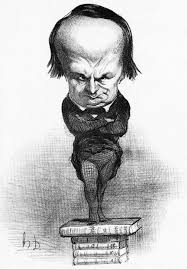
Daumier's fortunes changed again when he was given a new contract with Le Charivari in 1864. Tragically, as he resumed his work, creating the social and political satire of which he was so masterful, his eyesight was failing. Yearning for the quiet life in the countryside, he began staying for longer periods in Valmondois, where he had rented a modest home that eventually became his permanent refuge. In 1870, the French government offered him the cross of the Legion of Honor, although discreetly rather than publicly. He declined the offer. He continued to create lithographs and to paint but consistently struggled financially.
The devastating Franco-Prussian War of 1870 to 1871 deposed Napoleon III and, during the brutal siege of Paris by the Prussians, Daumier, having been elected as a member of the commission to oversee protecting the works of art at the Louvre, actively opposed Gustave Courbet's efforts to demolish the Vendôme Column. It was during this tumultuous period in the history of France that Daumier produced some of his most powerful works, lithographs relating to war, civil unrest, the ensuing deprivation of the siege, and so forth. Those prints constitute his final works in that medium.
In 1874, Jean-Baptiste-Camille Corot, who had become a close friend, helped him purchase the house in Valmondois. On February 10, 1879, Daumier died after suffering a paralytic stroke, leaving behind many unfinished paintings. When there was a resurgence of interest in his work after the turn of the century, a number of the incomplete works, many of which were by then in poor condition, were restored or even finished, including being provided with signatures - clearly not by the hand of the artist, however. As a result, his body of work is difficult to reconcile in terms of which portions are authentically, fully created by Daumier.
The Legacy of Honoré Daumier
Daumier's prolific output of lithographs and watercolors far outstretched that of his painting and sculpture. However, his work in each medium has its own particularities, from his judicious use of color in painting and watercolor and the emotionally expressive rawness of his sculpted forms to the brilliance with which exploited the range of tones as well as extreme contrasts of light and dark in his black-and-white lithographs. The range of his influence is also broad; his work and his often controversial social and political critique is said to have impacted artists as diverse as Constantin Meunier, Gustave Courbet, Edgar Degas, Édouard Manet, and Henri Matisse as well as his contemporaries such as Jean-Baptiste-Camille Corot and Jean-François Millet. In his day, poet and art critic Charles Baudelaire referred to Daumier as "one of the most important men, not only... in caricature, but also in modern art."
Daumier's Realism, which most often involved social commentary ranging from tongue-in-cheek to unflinchingly honest, laid the foundations for future generations of artists. In his own day, the images of society's cast-offs - absinthe drinkers, bar maids, panhandlers, and the like - by Manet and Degas were inspired by his own sympathetic but not saccharine vignettes of daily life. Subsequent generations of artists in Europe and America, from the German Expressionists to the Ashcan School and American Scene painters followed Daumier's lead in depicting members of their respective societies, often focusing on the working class and the poor to highlight social ills.
Influences and Connections

-
![Charles Baudelaire]() Charles Baudelaire
Charles Baudelaire -
![Jean-Baptiste-Camille Corot]() Jean-Baptiste-Camille Corot
Jean-Baptiste-Camille Corot -
![Henri Rousseau]() Henri Rousseau
Henri Rousseau ![Victor Hugo]() Victor Hugo
Victor Hugo- Charles Philipon
-
![Jean-Baptiste-Camille Corot]() Jean-Baptiste-Camille Corot
Jean-Baptiste-Camille Corot - Charles Philipon
Useful Resources on Honoré Daumier
- Honoré DaumierBy Bruce Laughton
- Daumier: The Heroism of Modern LifeOur PickBy Honoré Daumier, T.J. Clarke, Peter Doig, Catherine Lampert, Sarah Lea
- Daumier, 1808-1879
- Daumier: Visions of ParisOur Pick
- Honoré Daumier: 240 LithographsOur Pick
- Daumier: Painter of the Human ComedyOur PickBy Pierre Cabanne
- Daumier: 120 Great Lithographs (Dover Art Collections)
- Honoré Daumier: The Complete Engravings. L'oeuvre grave du MaitreBy Eugene Bouvy
- Daumier 1808 - 1879 (2000)Our Pick
 Ask The Art Story AI
Ask The Art Story AI